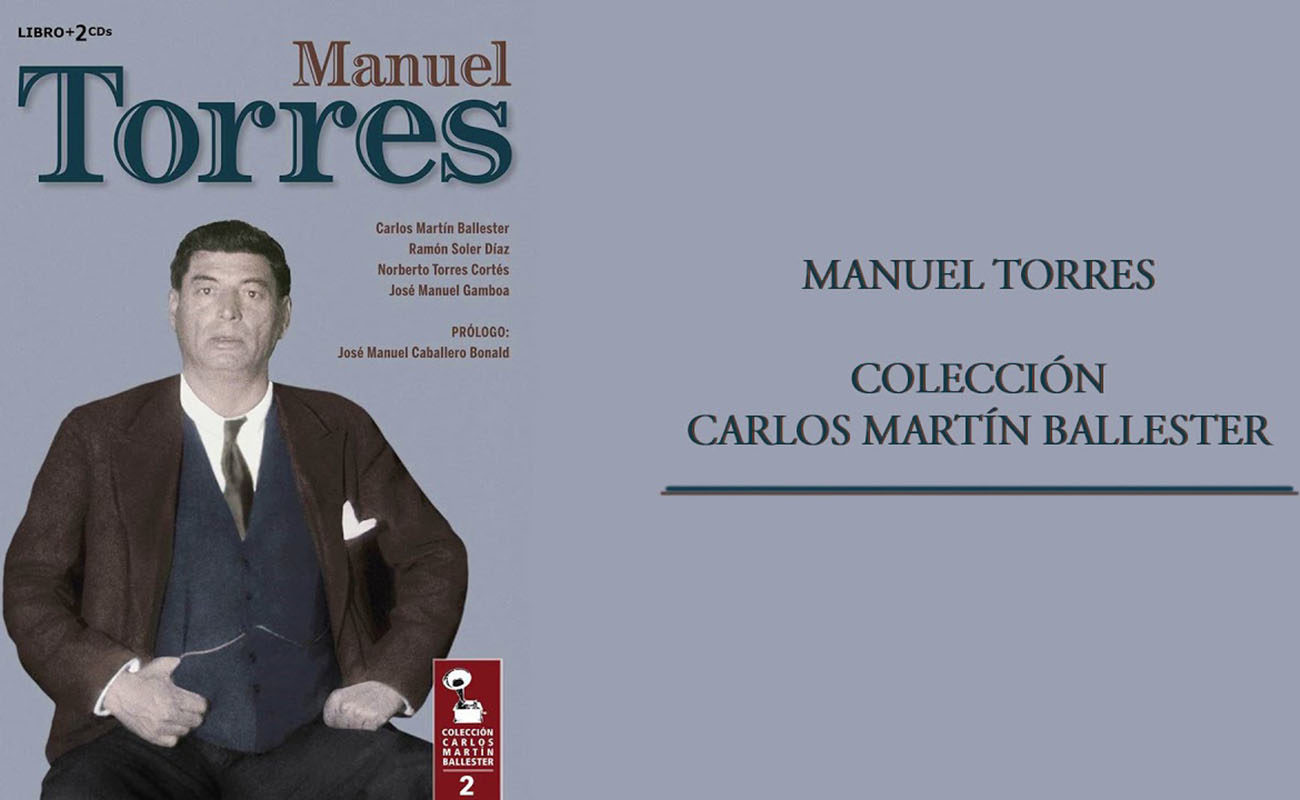Indispensable work about Manuel Torres
I was barely able to finish reading this book, which contains the whole discography of the great Manuel Torres, because I write more than I read, although I wish it were the other way around. I was captivated by this cantaor from Jerez about forty years ago, when I bough a small vinyl record with two of his cantes at the Casa Pinto shop, on

I was barely able to finish reading this book, which contains the whole discography of the great Manuel Torres, because I write more than I read, although I wish it were the other way around. I was captivated by this cantaor from Jerez about forty years ago, when I bough a small vinyl record with two of his cantes at the Casa Pinto shop, on Cuna de Sevilla street. At first, I didn’t like it, and I mentioned this to Antonio Mairena, who told me: “Listen to that record several times, and you’ll end up appreciating its value”. And that’s how it was. When Torres’ sound got into my head, I found my love for El Majareta (one of Torres’ several stage names) grow so much that I started to look for everything that had to do with him, his life and his works.
The Colección Carlos Martín Ballester, which featured Don Antonio Chacón in his first volume, has now published it second volume about Manuel Torres, doing it in a deluxe edition, which includes a very well documented biography (although, in my opinion, it’s too technical, and it doesn’t do an in-depth analysis of this genius from the Álamos street in Jerez) and an analysis of his works, which is something essential in any biography. We must highlight not only the work of Carlos Martín, but also that of Ramón Soler Díaz and Norberto Torres, without forgetting José Manuel Gamboa, although he didn’t write in great depth. Among them they’ve created a publication which, even as it was just released, is already essential in any flamenco library.
Besides missing a more in-depth perspective about the personality and the life of this genius, I also missed a more detailed analysis of the city of Seville at the time when this cantaor lived there for about thirty years, when he influenced other artists and was also influenced by them. I would also have liked more information about the family of this cantaor, both the Algeciras and the Jerez branches (paternal and maternal, respectively), as I believe this is something essential.
I say this because this publication will likely be the final biography about El Niño de Jerez, due to its magnitude and quality. It’s not only the best and most exhaustive work that has been done until now about this artist, but it’s the best that has been ever made about any flamenco cantaor, and that’s something we must thank Carlos Martín for, who will continue contributing his enthusiasm, wisdom and passion. No one knows better than him the world of vintage discography, that of slate records, and we are all lucky because he’s a generous man who is willing to risk his own assets so we can all know more about the legacy of those heroes of cante jondo who, as in the case of Manuel, died in misery.
This second volume of the collection under Carlos Martín’s name, devoted to the brilliant Torres, goes to prove that we are doing the right things in this field, flamenco research, which is so important for making available to our young artists and aficionados a trustworthy source to learn from. The next volume will feature Tomás Pavón, other genius of cante, born in the Puerta Osario district of Seville and brother of Niña de los Peines. Chacón, Torres and Tomás, three indispensable pillars for the understanding all the theory of the best cante in history.
Translated by P. Young




